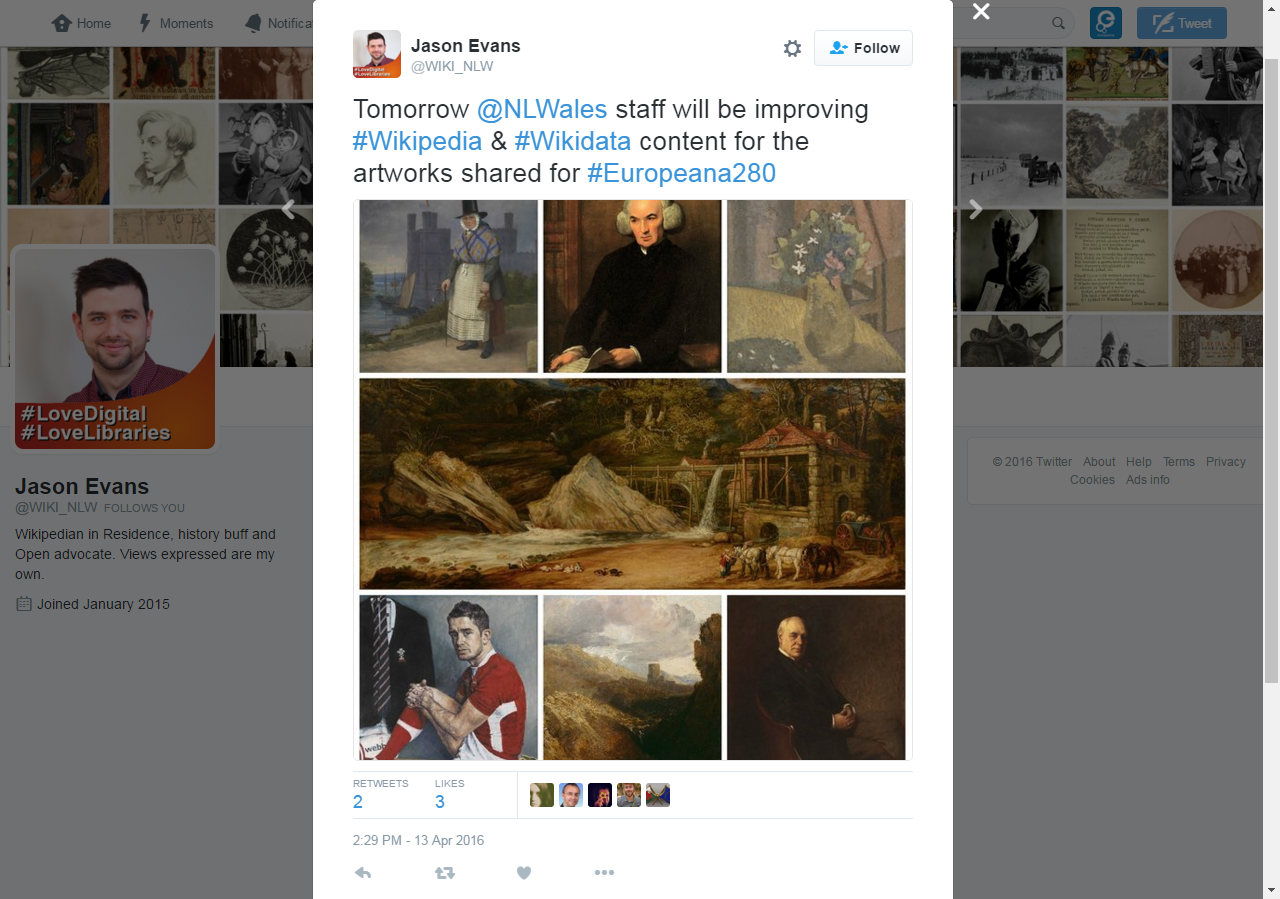40 languages, 30 countries and over 280 artworks: Europeana’s Art History Challenge on Wikimedia
This weekend marks the start of an exciting strand of the Europeana 280 campaign, which launches in full next week. It’s the beginning of a six-week competition (15 April - 30 May) on Wikipedia to write and translate articles about each of the magnificent nominated artworks.
Introducing The Europeana Art History Challenge on Wikimedia: a challenge to get local communities across the continent engaged with the campaign’s artworks, and increase accessibility of information about these artworks too.

A few of the Europeana 280 nominations visualised by @hayify
All the artworks that have been nominated as part of Europeana 280 will now receive their own dedicated Wikipedia articles. What better way to illustrate both the value of open cultural heritage and the idea of unity in diversity that the campaign embodies than bring together volunteers across the continent, all writing encyclopedia articles about each other’s important artworks in their own languages?
It's also one of Wikipedia’s largest ever translation competitions to date! By setting the challenge to give each of the Europeana 280 campaign artworks its own Wikipedia article, we are targeting the creation of over 10,000 artwork/Wikipedia-language pairs across dozens of European languages! You can see the complete table of artworks and languages we are tracking from the 30 countries taking part here.
Europeana and Wikimedia have a long history of working together. Last year, a Europeana Task Force outlined the best ways to deepen this relationship, and its primary recommendations included embedding Wikimedia directly into major activities and technology, and also to focus on the emerging potential of Wikidata. The Europeana 280 offered an exciting opportunity to put this plan into action!
Wikidata not only forms the base of this challenge, we are leveraging its technology too. Wikidata is the database connecting all the different Wikipedia language editions together when they have articles on the same subject.
Every single one of the artworks in Europeana 280 also includes a reference to its associated Wikidata item, and vice versa. In the future, it might be possible to automatically show visitors to Europeana snippets of Wikipedia articles for the artwork they are viewing, in their own language, simply by asking you the language preference of your web-browser.
For the moment, however, the focus is on the volunteer Wikimedia communities across Europe who are involved in this challenge. There are over 30 participating countries who will be attempting to improve the coverage of Art History across 40 language editions of Wikipedia. To mark the start of the challenge this weekend, there will be “editathons” - in-person Wikipedia editing events - held at participating museums across the continent.

A tweet from Jason Evans' about the National Library of Wales' Europeana 280 editathon
One participant is the National Library of Wales: their Wikipedian in Residence, Jason Evans, will be helping library staff to tackle the Welsh nominations: “The National Library of Wales is thrilled to be sharing a cross selection of its iconic Welsh artwork for the Europeana 280 campaign. Wales has a strong cultural and artistic heritage with its own unique identity and I hope that by improving Wikipedia content about our chosen artworks we can share this rich heritage with a global audience”.
We’ll be sharing more details from different events across the continent soon. If you would like to participate in this challenge - and perhaps win some prizes! - sign up on the participation page or contact your local Wikimedia organiser. You can also follow #Europeana280 to stay up to date with the campaign.
